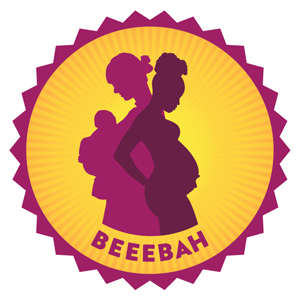
Lea esta hoja informativa en español
Table of Contents
- Breastfeeding, Chestfeeding, and HIV
- How Can Parents Living with HIV Breast/Chestfeed Their Babies Safely?
- What Are Other Options for Infant Feeding?
- What Choice Should I Make?
Breastfeeding, Chestfeeding, and HIV
Breastfeeding while taking HIV drugs is the standard of care for women and other parents living with HIV in resource-limited areas of the world. It has been shown to increase survival and well-being of their babies, and the risk of HIV transmission with this method is low.
However, in high-resource settings like the US, Canada, and western Europe, general HIV and public health guidelines have discouraged breastfeeding among women living with HIV. The information available has often been confusing for those who may want to explore the option of breastfeeding (also called nursing, body feeding, or chestfeeding – a term that is inclusive of those who do not have breasts due to surgery or otherwise, or who may prefer language that is gender neutral). Parents may consider breast/chestfeeding for important emotional, cultural, family, and health reasons, even if they live in an area where formula is easily accessible. Please see our fact sheet Can I Breastfeed While Living with HIV? for more information on benefits and challenges of breast/chestfeeding while living with HIV.
A significant change occurred in the US on January 31, 2023, when the Perinatal HIV Clinical Guidelines – which inform healthcare providers when they engage with patients about pregnancy, infant care, and HIV – were rigorously updated to:
- reflect current knowledge about the low likelihood of HIV transmission through breast milk when the breastfeeding person is taking HIV drugs and has an undetectable viral load;
- discuss benefits of breast/chestfeeding; and
- encourage informed, shared infant-feeding decision-making for women and other birthing parents living with HIV
In previous years, HIV treatment guidelines for the US, the UK, and other resource-rich countries had begun to include updates acknowledging the desire of some people living with HIV to breast/chestfeed and suggesting ways for providers to support parents considering this option. For more information on this guidance, please see our fact sheet HIV Treatment Guidelines for Pregnant People and Their Infants.
There are also many reasons why parents may choose a method other than breast/chestfeeding – including getting your baby breast milk without feeding them your own milk (discussed below). Having information about a range of options can prepare you for conversations with your provider, and support you in making an informed decision. This fact sheet provides some of the information you may want to consider in that process.
Click above to view or download this fact sheet as a PDF slide presentation
How Can Parents Living with HIV Breast/Chestfeed Their Babies Safely?
You are the only person who should decide how your baby will be fed.
If you choose to breast/chestfeed yourself, here are some tips to help you do so safely:
- Take your HIV drugs exactly as prescribed (adherence). This will keep the amount of virus in your blood low and make it far less likely that your baby will acquire HIV. Your healthcare provider may test your viral load more often while you are breast/chestfeeding.
- Make sure your infant gets their doses of HIV drugs as well. If you are breast/chestfeeding, additional drugs may be prescribed for the baby, and additional testing may be recommended.
- Do your best to breast/chestfeed exclusively (no other forms of nutrition for the baby) for six months – recognizing that there may be reasons to temporarily use formula, such as not having enough pumped milk when a caregiver needs it. It is a good idea to avoid giving the baby solid foods before six months of age.
- Take good care of your breasts. Regular feedings, putting a warm washcloth on your breast before feeding and trying different positions to make sure your baby latches properly can prevent mastitis, engorged breasts or cracked nipples.
- Find people who will help you to manage the stress of taking care of an infant, healing your own body after birth, breast/chestfeeding, and dealing with your HIV.
- Some women also feel very sad after having a baby (called "postpartum blues" or, in more severe cases, postpartum depression). Seek help if you feel this way.
- Ask knowledgeable people in your community or professionals, such as lactation consultants, for advice on some of the challenges you may experience while breastfeeding, including cracked or sore nipples, or a baby who has difficulty nursing.
- Take good care of your own health. Make sure you get enough healthy food and drink plenty of (clean) water. Breastfeeding is tiring, so get enough rest.
BEEEBAH (Building Equity, Ethics, and Education on Breastfeeding and HIV) is a comprehensive, multi-tiered three-year project expanding upon The Well Project's efforts to increase knowledge and access to information around breast/chestfeeding and HIV.
LEARN MORE & CHECK PAGE OFTEN FOR BEEEBAH UPDATES!
What Are Other Options for Infant Feeding?
Infant formula
Formula is modified cow's (or goat or soy) milk. It is available as a powder (must be mixed with clean water) or liquid (must be refrigerated after the container has been opened). The modifications to the milk are trying to make it similar to human breast milk. However, formula does not carry any antibodies or other nutrients from the nursing parent, and therefore does not provide the protective effects of breast milk. Because it does not come from a human being, feeding a baby formula is the only way to absolutely guarantee no risk of HIV transmission.
Unlike your own breast milk, formula is (usually) not free. Furthermore, millions of people worldwide do not have access to safe water or sufficient formula. This is sometimes true even in high-resource countries such as the US, as recent events like the polluted water supply in the US city of Flint, Michigan, and a shortage of formula due to the temporary closure of a factory, have shown.
Milk bank
Women who produce more breast milk than they need for their own baby may give the extra milk to a milk bank. Women with milk to donate go through a screening process and blood tests before donating their milk. The milk bank then gives that milk (often for a cost, depending on the circumstances and the milk bank) to babies who for whatever reason cannot be breastfed. In theory, this is a good solution for women living with HIV who want to be sure that there is no way they can transmit the virus to their infant. However, since milk banks depend on donated breast milk, they may not always have enough milk to give away. Also, your baby may get milk from different women who pass on different antibodies. This means they may not get as much of a specific antibody as they would if they were always fed by the same woman who passes on only one particular set of antibodies.
Women with milk to donate go through a screening process and blood tests before donating their milk. The milk bank then gives that milk … to babies who for whatever reason cannot be breastfed.
Wet nurse or cross-feeding
One option is for another woman to breastfeed your baby. Before baby bottles became widely available, wet nurses were common. Today, there are some paid wet nurses, or you can have an informal arrangement with a friend. Again, this solution depends on a woman producing more breast milk than she needs. Unlike a milk bank, the woman providing the milk must be in the same place as your baby, and available whenever your baby needs to be fed. The woman would also need to be screened for health conditions that affect breastfeeding, including HIV and other conditions that can be transmitted through breast milk.
Flash heating
You can express your breast milk by using a breast pump, then quickly heat the milk to destroy any germs or viruses in it. This process kills most of the HIV that may be in your breast milk. However, it also destroys some other components of the milk that are good for your baby. It is also an extremely time-consuming process. Flash heating was developed for people in resource-limited countries who do not have access to any of the other options listed here.
What Choice Should I Make?
You are the only person who should decide how your baby will be fed. If you choose to breastfeed, it is important to take your HIV drugs, and keep up with healthcare visits and viral load testing, exactly as prescribed and recommended by your provider. It is also very important to find a support network, including a provider—and other allies—whom you trust, and who can be good sources of information without judgment.
Making this decision can be a challenging process. You may feel fear, stress, or even some sadness over any of the choices you are considering. It is also important to remember to take care of yourself during this process. It may be helpful to connect with a group of women or others who can offer support, to write about your thoughts and concerns, or to engage in some other activity that helps you feel supported as you prepare to make the best possible decision for you and your growing family.
Special thanks to Shannon Weber, MSW from HIVE and Lena Serghides, PhD from University of Toronto for their special consultation on the initial version of this fact sheet.


